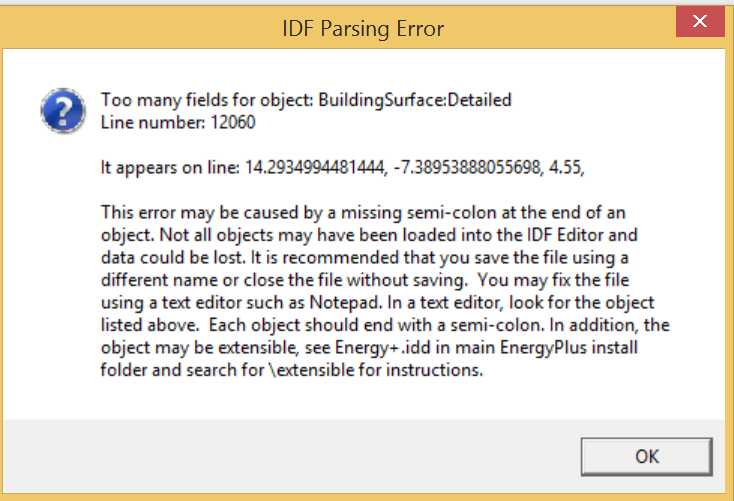By default, BuildingSurface:Detailed only supports surfaces with 120 of fewer vertices. Here is the cutout from the Energy+.idd file.
BuildingSurface:Detailed,
\memo Allows for detailed entry of building heat transfer surfaces. Does not include subsurfaces such as windows or doors.
\extensible:3 -- duplicate last set of x,y,z coordinates (last 3 fields), remembering to remove ; from "inner" fields.
\format vertices
\min-fields 19
...
N360, \field Vertex 120 X-coordinate
\units m
\type real
N361, \field Vertex 120 Y-coordinate
\units m
\type real
N362; \field Vertex 120 Z-coordinate
\units m
\type real
You may be able to overcome this by modifying your local Energy+.idd file and adding
N363, \field Vertex 121 X-coordinate
\units m
\type real
N364, \field Vertex 121 Y-coordinate
\units m
\type real
N365, \field Vertex 121 Z-coordinate
\units m
\type real
N366, \field Vertex 122 X-coordinate
\units m
\type real
N366, \field Vertex 122 Y-coordinate
\units m
\type real
N367; \field Vertex 120 Z-coordinate
\units m
\type real
for as many vertices as you need.
One important and relevant question is—why do you have a surface with more than 120 vertices? Do you really need that many? Does this surface have a highly irregular perimeter? Or is it a circle that can be approximated using fewer vertices, e.g., 36?







